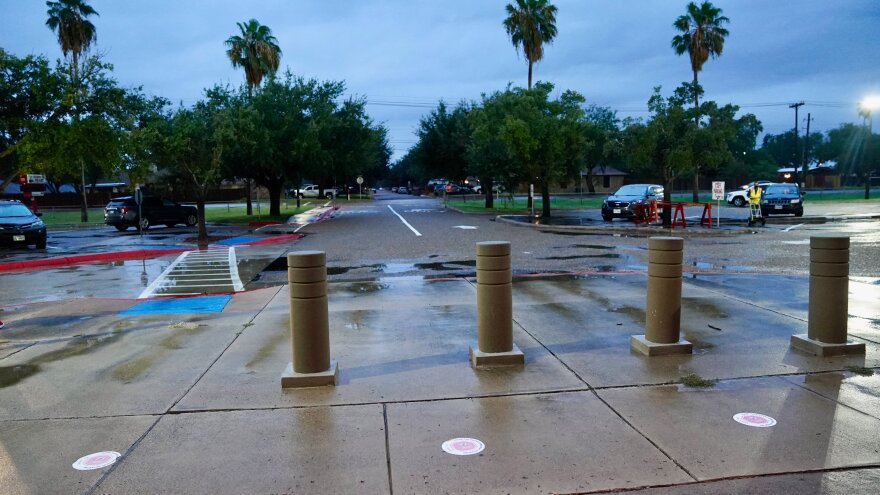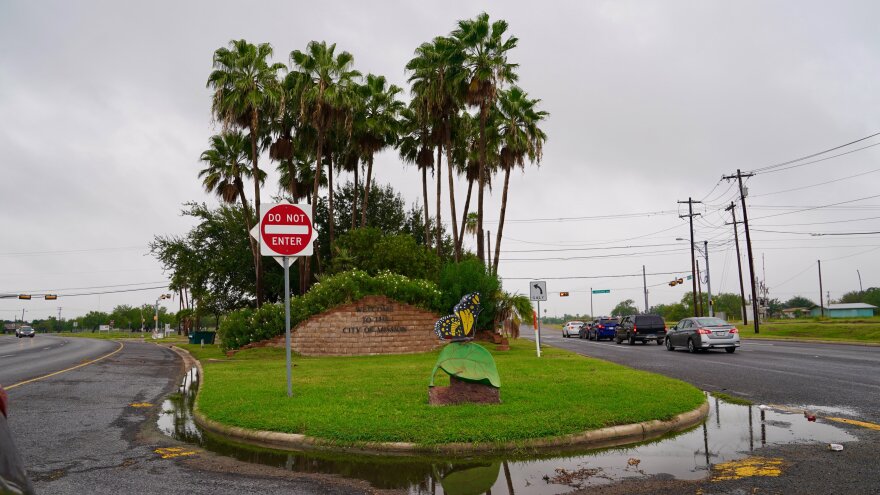A rainy weekend across the Texas-Mexico border region provided little relief to the dangerously depleted International Reservoirs in the region.
On Thursday, a tropical wave moved inland from the northern Gulf near the Louisiana Coast. It brought heavy showers and flash flood warnings into early Monday as it moved northwest along the Rio Grande, according to the National Weather Service in Brownsville (NWSB).
While many took to social media to give thanks for what seemed like an answer to the drought in the region, experts say the weekend rain will not make a significant difference to the water shortage that community leaders along the border are calling “a threat of imminent disaster.”
RELATED | Scorched border counties downstream of depleted Falcon Lake face ‘threat of imminent disaster’
Barry S. Goldsmith, Warning Coordination Meteorologist for NWSB, explained that while the current rains will provide temporary relief to local water supplies by filling up detention ponds and drainage canals, the capacity levels at Falcon International Reservoir will only see “a small percentage rise” as a result.
“In order to fill each reservoir to levels that can preclude community water supply issues, it would require several more waves,” said Goldsmith. “Waves like this one, but through September and into early October.”

Falcon International Reservoir, at only 9.5% capacity on Monday according to the Texas Water Development Board (TWDB), represents the only surface water source that connects all downstream border communities to running water, from Zapata to Brownsville.
Farther northwest along the Rio Grande, the Amistad International Reservoir, at 30.3% capacity on Monday, serves communities downstream from Del Rio to Laredo, and received no significant inflows from rainfall over the weekend.
Last week, two county judges in the Rio Grande Valley issued declarations of disaster in response to the increasingly severe water shortage and ongoing drought in the region.
Multiple municipalities throughout the region are currently under mandatory stage 2 and 3 water restrictions, with plans for increased restrictions on the way.
A sign of changing climate as some communities on the Texas-Mexico border work hard to restrict water usage with one hand, while distributing sandbags for flooding with the other. County leaders have called the current water shortage a "threat of imminent disaster." https://t.co/ohN6PT1ra1
— Pablo De La Rosa (@pblodlr) August 16, 2022
Adan Oceguera is an instructional aide in the City of San Benito in Cameron County, which entered a second stage of water restrictions on Aug. 6, currently enforced under penalty of a $200 fine.
“The restrictions are personally manageable,” said Oceguera. “But I can’t help but notice the modest response from our local government compared to the dire, impending water crisis.”
While some have expressed a wish for rainy weather to put an end to the current regional crisis in the short-term, Oceguera–like many others in the region–is becoming more concerned about the long-term prospects of the public water infrastructure that depends on the Rio Grande watershed.
“We can’t depend on hurricanes or tropical storms to save us,” said Oceguera. “We need solutions. If things don’t get better, it’s going to be really rough for communities like ours that are already in desperate need for resources and infrastructure."
Goldsmith agrees that a different approach needs to be taken.
“The Rio Grande Valley has often been described as being in a state of perpetual drought broken by the occasional devastating flood,” said Goldsmith. “Because drought is a fact of life here, and warming temperatures are now increasing the rapid onset of drought conditions, water conservation is a persistent need.”
Goldsmith says that rainwater harvesting across the region would be a good residential starting point, while large scale approaches could include more desalination plants and smarter irrigation.

In San Benito, Oceguera says he’s also concerned about the future general stability of the region as climate change accelerates globally, and brings more severe weather conditions in the long-term.
“For the first time, we had days last year where we couldn’t take kids outside to play because it would’ve been hazardous to their health,” said Oceguera. “What’s most concerning to me is a future where extreme weather becomes commonplace. This is climate change. It’s not necessarily a tidal wave that upends society, but what we’re seeing here in the Rio Grande Valley now and across the world."
In 2010, Hurricane Alex devastated communities in North Mexico as it made landfall in Tamaulipas and moved west. But the Hurricane also delivered up to 70 inches of rain north of those areas along the Rio Grande watershed.
“There was actually too much runoff,” said Goldsmith about the effects of Hurricane Alex. “Each dam had to release large quantities of water to maintain solvency.”
But Goldsmith says even a similar event would still not be enough to return both reservoirs to full capacity today.
“A similar event this year would fill the reservoirs but be short of capacity,” said Goldsmith. “This is due to the near-record low starting levels both in the U.S. and in Mexico.“
“I’m hoping that the city and county are taking steps now to prepare,” said Oceguera. “For this crisis and the others sure to come.”




